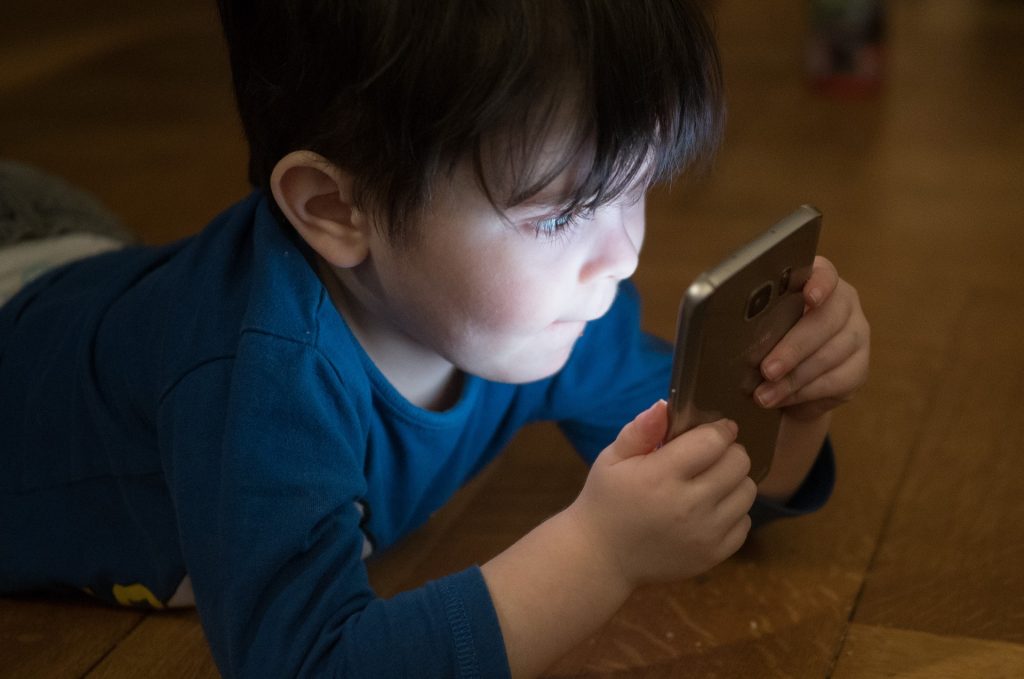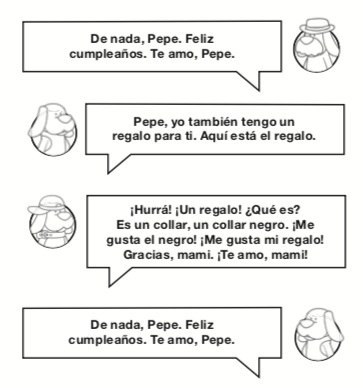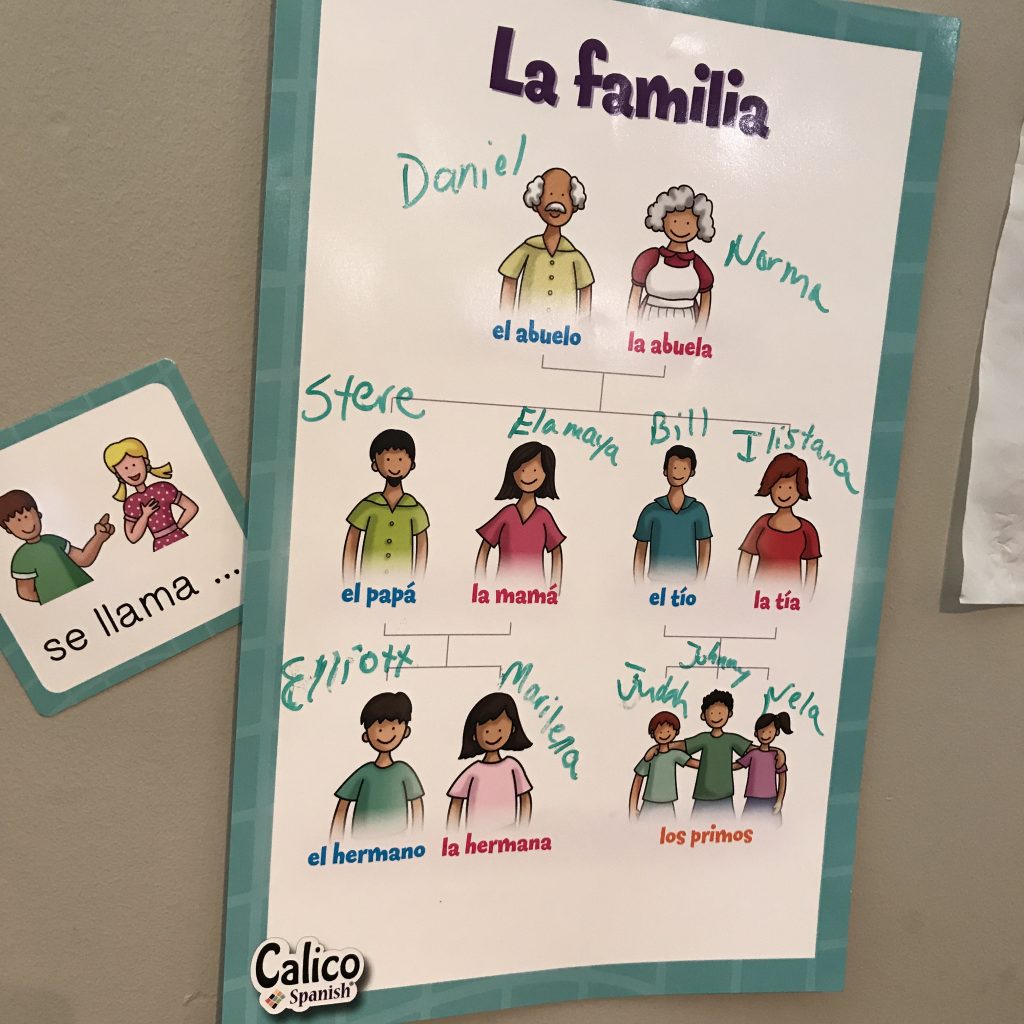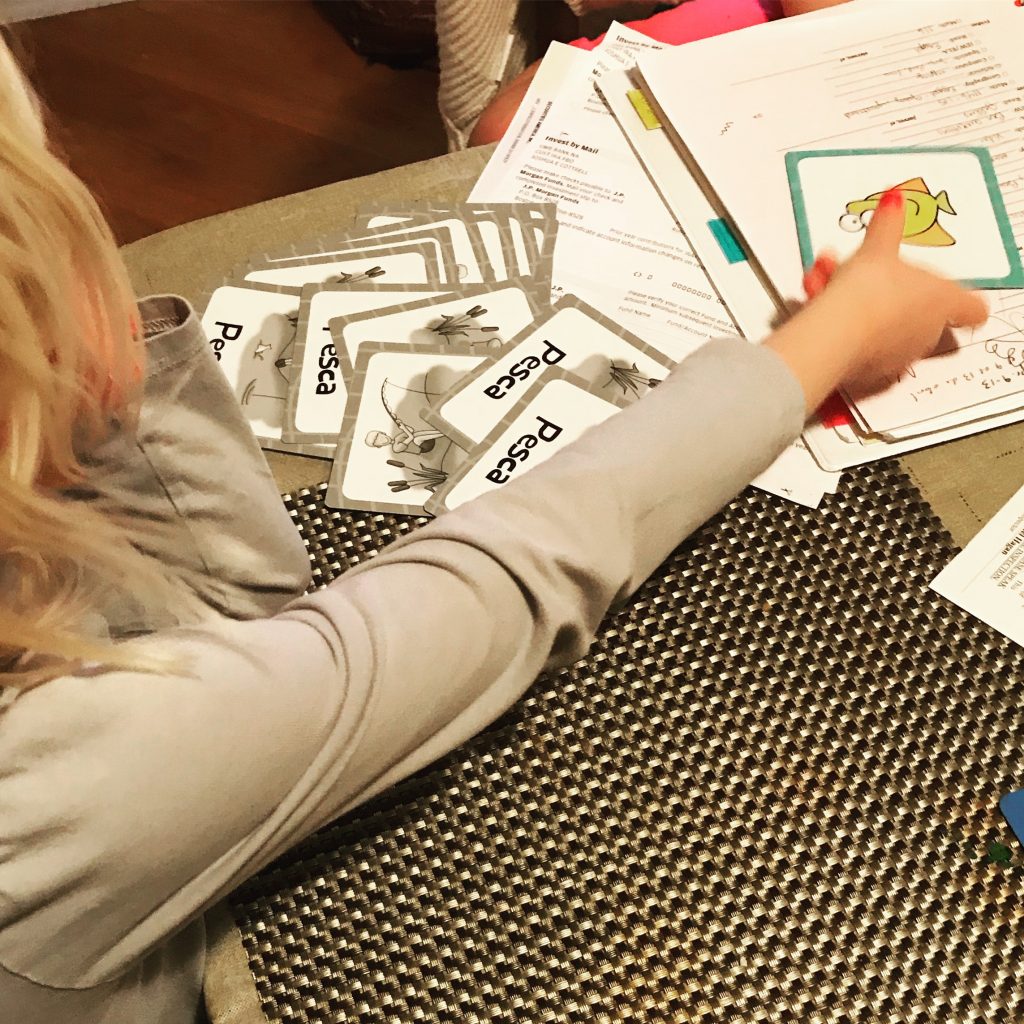Less screen time with an online curriculum? 5 ways we do that.
It’s a widely accepted truth at this point: children need less screen time. This is a challenge, though, because not all screen time is created equal. For example, I feel fairly safe saying there’s not a square inch of social media that a child needs to occupy. In fact, as children get older, more screen time is linked with depression and anxiety. Does our society need more of that? Surely not. And then we read quotes like this one from a former VP at Facebook:
I think we have created tools that are ripping apart the social fabric of how society works.
– Follow us on Twitter –
It’s high time we take a hard look at what these screens are doing to everything from play to relationships to self-control.

Screen time limits with online content?
From parents homeschooling kindergarteners to elementary teachers to preschool teachers, many leaders want to help children learn Spanish, but don’t have enough Spanish skills. For them, it’s incredibly hard to find effective tools without getting some help from the world wide web. (For general tips and resources, including advice on limiting screen time with kids learning language, see this helpful resource from Mom Loves Best.)
– Like Calico Spanish on Facebook –
Here at Calico Spanish, we get it. We’re moms of some pretty great kids, and we want to see them balance their time with Toca Life with some real-life bike riding. So when we set out to create a digital tool that provides the comprehensible input children need to acquire Spanish, we had another goal. We wanted to help you successfully incorporate a variety of activities off the screen. This isn’t just about screen time, either – regardless of what you might hear from a curriculum company, children cannot acquire language independently. Plopping kids down in front of a screen to learn to read may actually work, but doing it for language learning most certainly does not.
Calico Spanish Stories is a curriculum you can use entirely online. To break it down briefly,
- The curriculum consists of three levels (and Level D will appear later this year),
- and each level contains 8 units,
- and each unit contains 10 core lesson plans (with extras for review and culture days), focused on the language used by animated animal characters in the comprehensible all-Spanish video story.
– Follow us on Instagram too! –
Remember: The red button gets you access to 3 full units per level for 7 days.
Five off-screen elements
Without a subscription to the curriculum you can’t see the Video Story. However, though we offer everything in a digital format, including storybook videos and song videos, every other piece of the curriculum is achievable off the screen. How? Read on to see samples of the strategies we’ve used to help you all use real Spanish when it’s time to turn off the story video.
1. Storybooks
In each level, we’ve taken the Video Story scripts and turned them into a set of Storybooks. Instead of the characters talking to each other in an animated video, you can read the stories together like any other book. For example, in Level B, in Units 3 and 4, Pepe and his amigos are at a soccer game. We combined the stories from the two units set in the soccer game into one Storybook, El partido de fútbol. You can buy the Storybooks separately, or see all of them in our bundle. If you aren’t confident in your Spanish, simply turn on the video in your subscription. However, instead of watching the video (screen time!), follow along in the physical book. After a while, you and your learners will all be ready to try taking the narrator’s place!
Take a look at the first Storybook of Level B, which we’ve made available on YouTube:
2. “I Spy”
“I spy” is a fun game that anyone can play from nearly the very beginning of their language learning journey. In Stories, in the very first unit of our very first level, the teacher plays “I spy” with children looking for objects that are azul, blue. Farther along in Level B, we encourage you to add phrases like “under” or adjectives to describe the object you see. Check out the instructions that you can download whenever the game is mentioned in the subscription.
3. Dialogues
The point of language is to communicate with people, and the root of that, at the earliest stages, is asking and answering questions. Every Video Story that underlies every unit has a story-based dialogue that contains the language focus of the unit. At the beginning, the dialogues are the basic things children first hear from Spanish speakers: What is your name? How old are you?
As the curriculum progresses, children are exposed to more complicated dialogues. Here’s one from Level B on receiving a gift, taken from the student Activities Book that shows children every dialogue:

But the exposure is, you guessed it, screen time. And as important as exposure is – and they won’t acquire Spanish without it – children will benefit from interaction as well. They become more confident. They develop motor memory for comprehensible pronunciation. They internalize the words on an even deeper level. In each unit, we incorporate suggestions several times in the lesson plans to move children from hearing the dialogue to actually using it. To keep it low-risk near the beginning, we often suggest using finger puppets and stuffed animals. (In fact, we’ve made you finger puppets of the characters.) At the end of a unit, we love to see children confidently trying out the dialogue. They will even start creating with it, such as switching out the gift noun in the dialogue above.
4. Calendar time (and other posters)
 You can accomplish the lesson plans in Stories without any print resources. Even when we recommend you use the posters, we offer you the PDF download. However, I strongly recommend Stories subscribers purchase at least the poster set. Why? For one, the durable, full-color resource puts the language in an attractive format wherever you want learners to see it.
You can accomplish the lesson plans in Stories without any print resources. Even when we recommend you use the posters, we offer you the PDF download. However, I strongly recommend Stories subscribers purchase at least the poster set. Why? For one, the durable, full-color resource puts the language in an attractive format wherever you want learners to see it.
Also, the posters are laminated, which makes it so you can write on them with dry-erase markers. In my own class of kindergarteners working through Level B, they love it when we fill in the calendar poster, write names on the family poster, or circle activities we all like to do on the “¿Qué hace?” poster.
Introduce a child you love to a lifelong journey of speaking real Spanish to real people. Click the red button to experience it FREE.
There’s more to come: we can’t wait for you to see our new level D posters, including a supplement that gets kids exploring the monarch butterfly migration!

Our write-on calendar poster is a favorite feature of Level B.
5. Games
 “I spy” is the easiest and first game we ask learners to play, but it’s certainly not the only one. In Level B, you can print or purchase with the flash card set our Pesca (“Go fish”) game (pictured in action at right). Check out Level C’s fun ways to play Matamoscas(“Flyswatter”) or Dígalo con mímica. We’ve incorporated culturally authentic games, too. See our blog posts about the games introduced in Level B, Pañuelito and Doña Ana.
“I spy” is the easiest and first game we ask learners to play, but it’s certainly not the only one. In Level B, you can print or purchase with the flash card set our Pesca (“Go fish”) game (pictured in action at right). Check out Level C’s fun ways to play Matamoscas(“Flyswatter”) or Dígalo con mímica. We’ve incorporated culturally authentic games, too. See our blog posts about the games introduced in Level B, Pañuelito and Doña Ana.
All of these games mean less screen time and more language-rich together time, even for groups without a proficient Spanish speaker.
We could go on and on about the ways Stories connects you and your learners off-screen, because after all, the Video Stories and song videos are the only material that “must” be done online. These five ways are a great start to give you a peek into our approach.
What about you – do you have any suggestions on how we can incorporate more real-world time into an “online” curriculum?
P.S. We love homeschoolers.






No Comments